SANGUINE ROOT STAFF HIKES APPALACHIAN TRAIL IN BEAUTIFUL HAMLET OF WEVERTON MARYLAND.
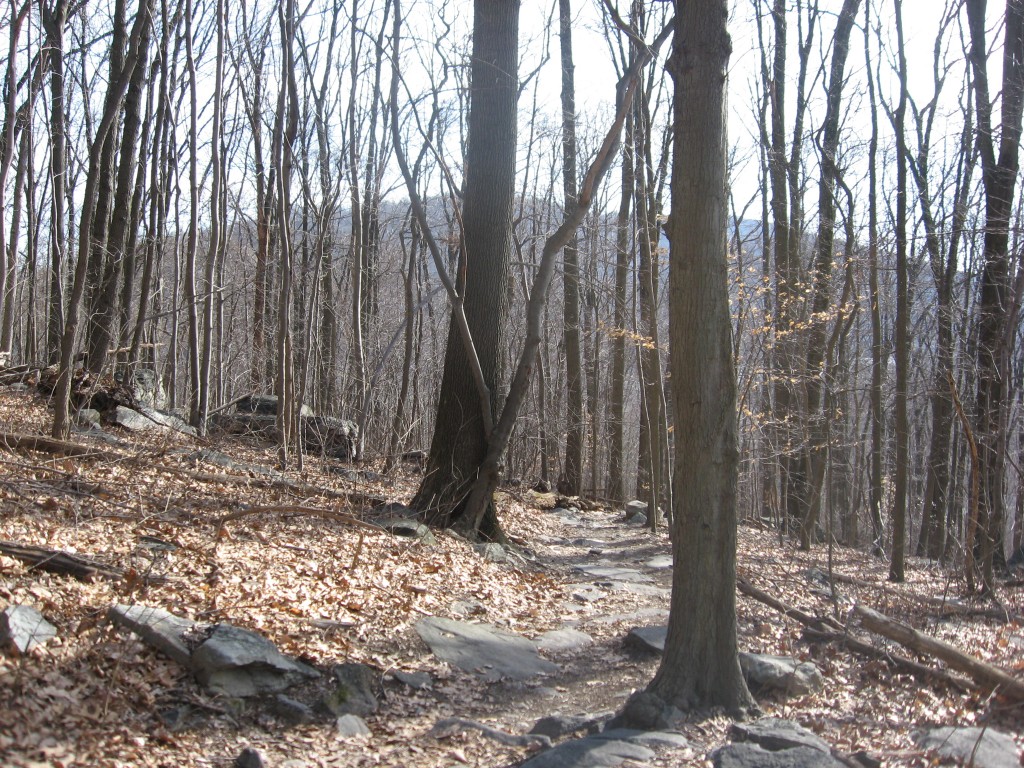
A welcome adventure in what feels like a far away land from Morris Park, the Sanguine Root staff has left the piedmont region. The Appalachian Mountains offer a different tableau of species and geology. There are present a wide variety of things we are used to in Morris Park, such as heavily folded metamorphic rock, hiking trails with waterbars, and upland trees such as Beech and Oak. This location is 1.5 miles from Harper’s Ferry West Virginia.
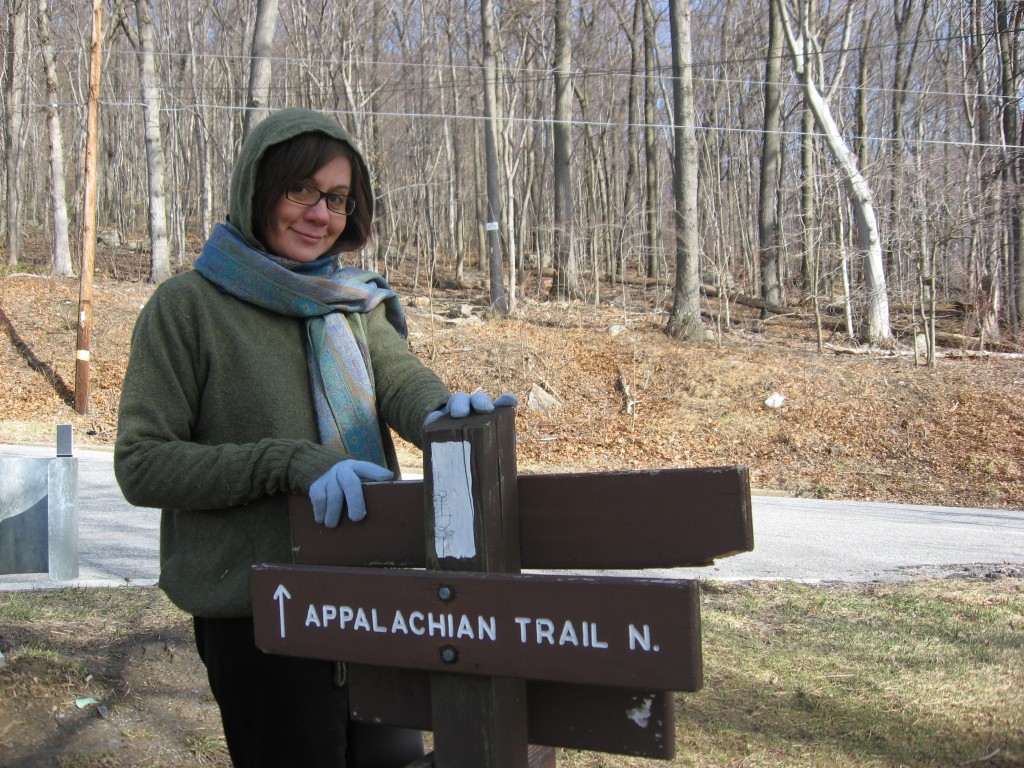
There was a sign at the beginning of the trail that outlined rules, laws, warnings, and etiquette, with maps included in the mix, a bit of history and tips. Also noted was the many volunteer groups that maintain the trail system. Â This trail is spectacular. Â We also noted how much the town of Weverton Maryland, population 500, takes pride in the trail and cares for it.
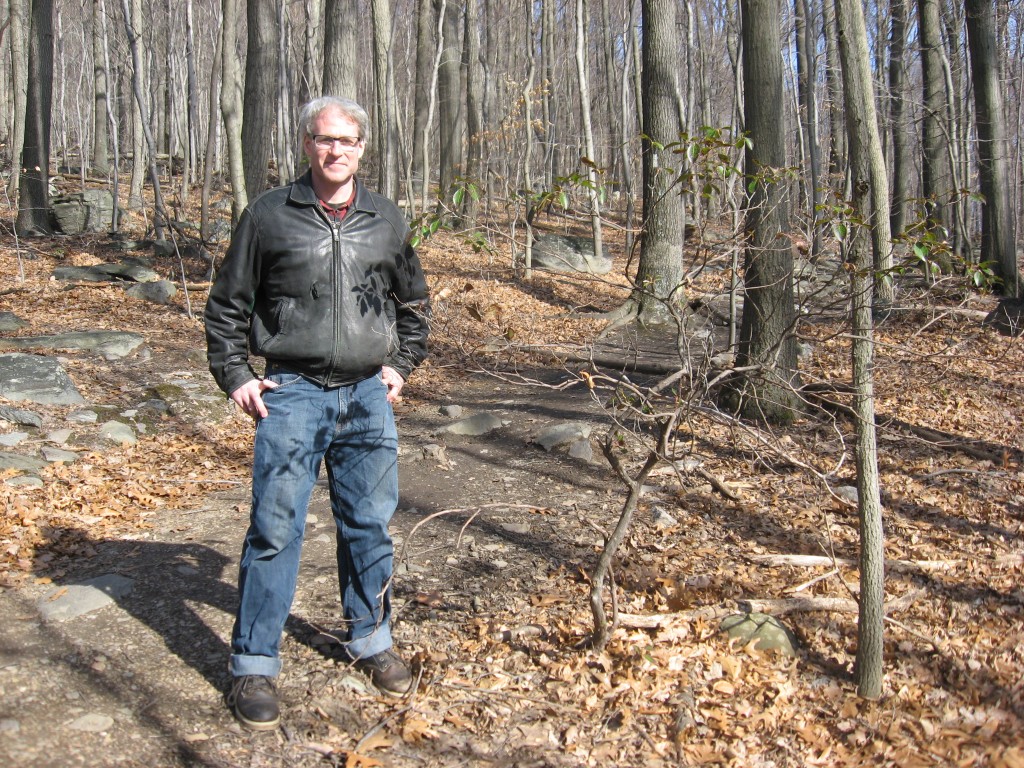
There were many oak trees present along the trail. Â We found a great Beech Tree (Fagus grandifolia) with much personality.
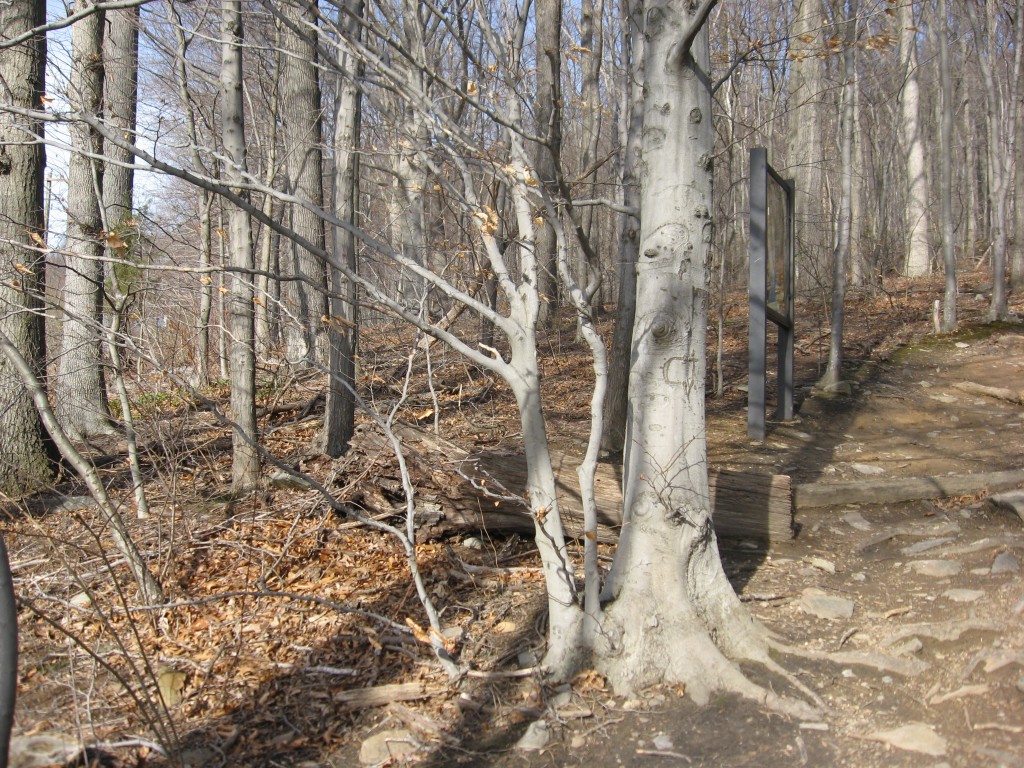
Driving on the I-70 west into Fredericksburg Maryland, we could see the Appalachian Mountain province in the distance. Seeing this mass of upturned rocks was a great reminder of our position on the piedmont. Nothing like a geographical reminder of ones landmass than a mountain range or a lack thereof.
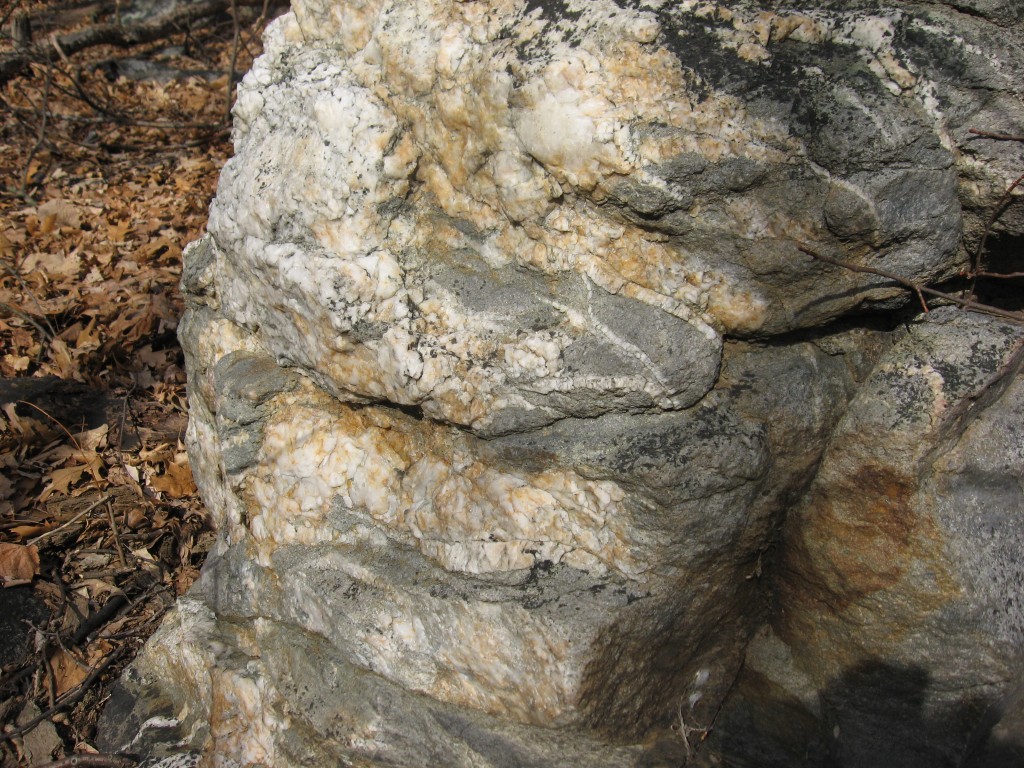
Mountains have a way of reminding us of our geological past.  We are intrigued by them and the more we learn about them, we are astounded by the age of the earth. Try to comprehend 550 million years ago. Back then, this actual rock was a sandy beach.  Then it was covered with more layers of sediment, and weighed down by each successive layer, becoming compressed and heated until  the grains of sand cemented together and it officially became a rock we know of as sandstone.  Then the continents of Africa and North America collided and this pushed sideways on all of the layers of the rocks, much like what happens to that annoying throw rug that gets caught under the bathroom door.  The rug folds and bunches up.  The folds can be neater like that of a pleated curtain, or the folds can meet up, like the plastic liner of the kitchen trash, or that rug on the bathroom floor.
Then the folds, which by this time, are very tall mountains, on the order of the present day Swiss Alps become eroded by rain. 300 or so million years eroded the Appalachians down to mere stubs of the up-ended sandstone layers.  Because Sandstone is harder than the neighboring  shale layers (which is clay from river deposits transformed into rock) the upended sandstone formations end up being the mountains that we see. Of course, there are many more complicated factors and complex foldings that occur along the way, which make it a much more interesting story.  The fact that these layers of deposited sand were buried so deep during the mountain-building process that they heated up and partially melted changes the simplified explanation of folding described.  However that would explain the bands of white Quartz seen in the above picture.
Sand is composed mainly of silicone, which is the what glass is made of. Glass is an amorphous form of this element. Â Glass is sand that is heated up to the point of melting, and cooled so quickly, it has no time to arrange itself in any specific order, which is something elements like to do. Â Sand is actually the element silicone (often with other elements) cooled slow enough in a volcanic setting to have a structure. Â Then the cooled volcanic mass is eroded like all the other types of mountains to small bits we like our beaches to be and will never ever leave the carpeting in the car- no matter how much we vacuum.
In the process of metamorphic rock formation, the sandstone, partially melts and this melted sand cools very very slowly, giving the silicone enough time to arrange itself in a structured way, forming crystals. Â These are the white quartz bands on the rock seen above. Â All the while, these bands were then being folded in the continental collision. Â This was going on very deep in the earth. Â Then when the mountain eroded, all that weight above it was lifted off and the rock sprung up in an uplifting process. Â The rock pictured above went through all of this stuff over a span of 550 million years. Â What is really neat is that there it is, in its spot on the earth, right where it all happened, here in Weverton Maryland, right before our eyes. All of this generalized history can be read just by looking at the rock.
One last thing: sometimes the folding structures found on the cross-section of a rock mimick the larger picture. These interesting folds occur on a macro scale as well, and this helps us interpret complicated geological structures.
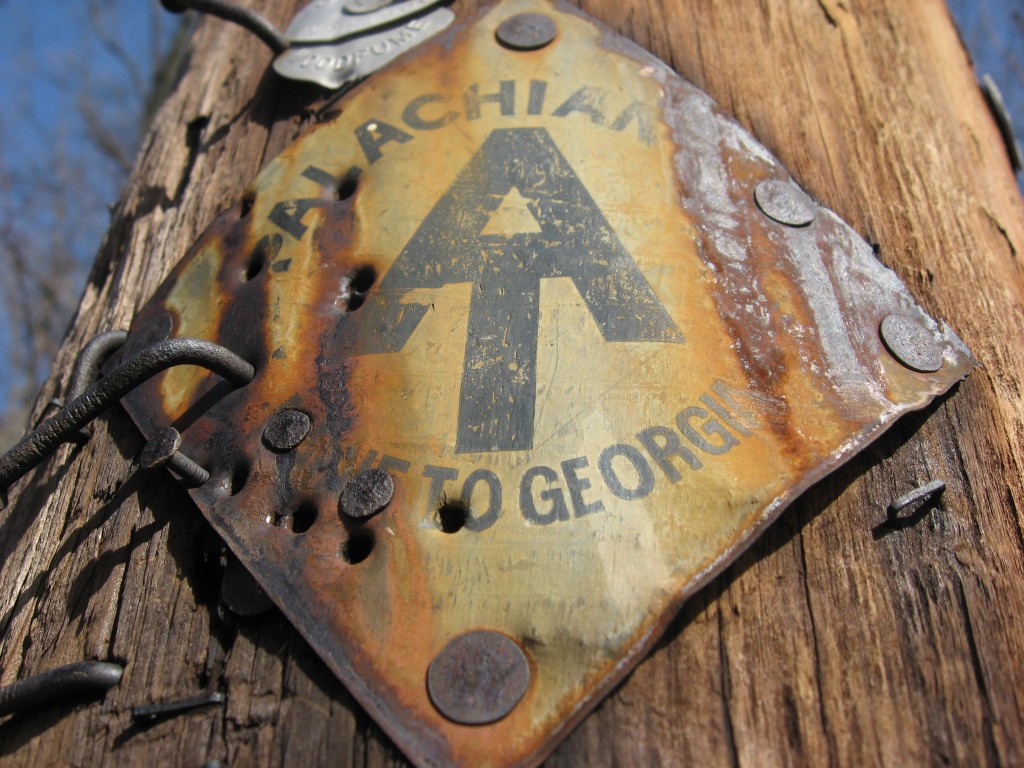
This old sign has most likely guided many a weary hiker up yet another rocky hillside with a complex geological story to tell.
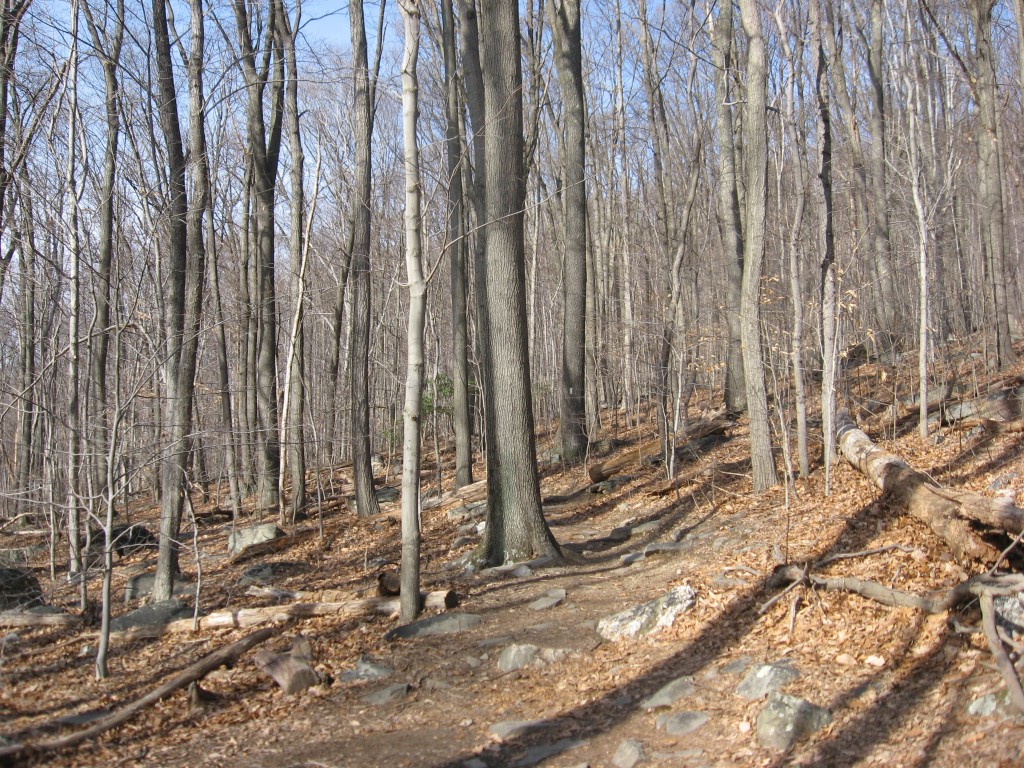
This next tree we have never seen before, but we think it may be a Honey-Locust. Â Anyone recognize this tree?
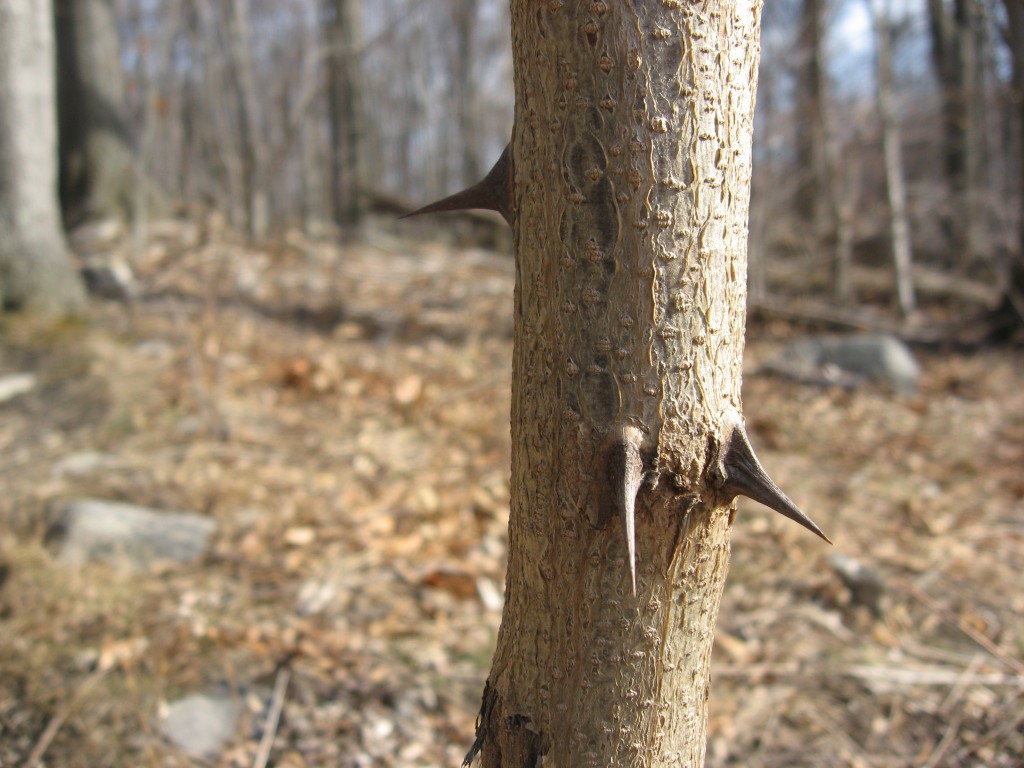
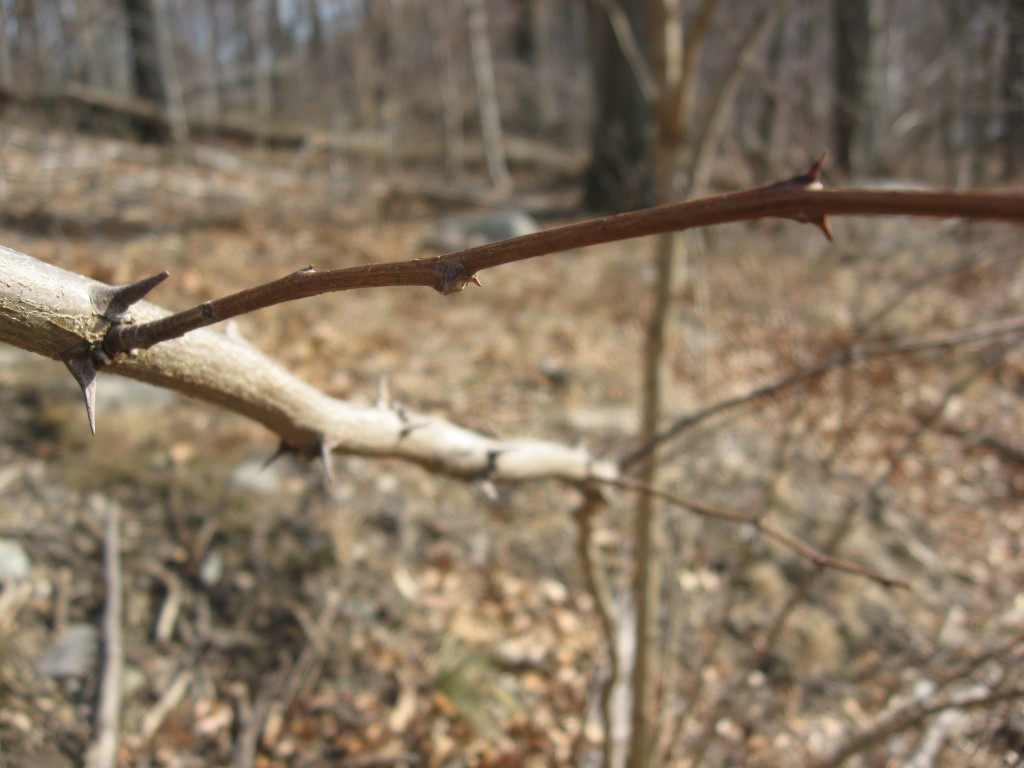
Its not Alaria, we know that much!



It looks as if you guys had a great expedition. Welcome home!
Makes me look forward to spring in Appalachia. Loved your geologic description. Now I can think of the sand in the auto carpet as part of a 550 million-year history.